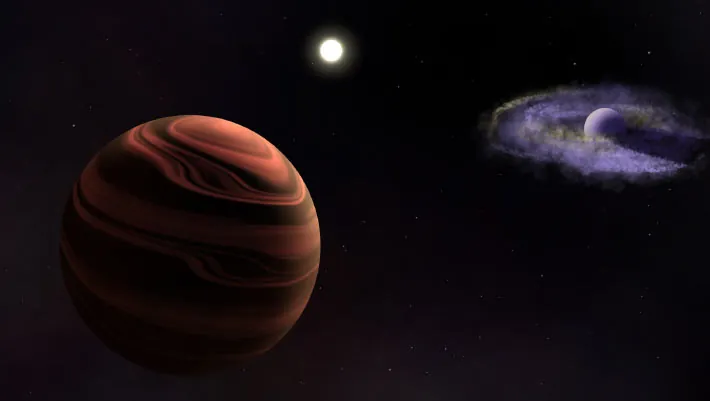
James Webb Discovers Extraordinary Features in Two Young Exoplanets!
2025-06-11
Author: Nur
Prepare to be amazed as astronomers using the cutting-edge James Webb Space Telescope have made groundbreaking observations of two young exoplanets in the YSES-1 system! This stellar duo, located a staggering 309 light-years away in the constellation of Musca, is attracting attention for its unique characteristics.
Meet YSES-1: A Stellar Playground for Giant Planets
At just 16.7 million years old, YSES-1 is a solar-type star, closely resembling our Sun. However, it plays host to two gigantic planets, YSES-1b and YSES-1c, which are a jaw-dropping 14 and 6 times more massive than Jupiter! These behemoths orbit their star from a distance much greater than our own Jupiter and Saturn, at a staggering 160 and 320 Astronomical Units (AU) respectively.
Shocking Discoveries: Clouds of Silicate and More!
What makes these exoplanets especially intriguing is their reddish hue, hinting at exotic atmospheric properties. The Webb Telescope’s advanced spectroscopic instruments reveal the first direct evidence of silicate clouds in YSES-1c’s atmosphere. These clouds, possibly containing iron, might even rain down onto the planet!
A First for Science: Spectacular Silicate Clouds!
Dr. Evert Nasedkin, a key researcher from Trinity College Dublin, explains, 'Essentially made of sand-like particles, this is the strongest silicate absorption feature observed in an exoplanet yet.' This spectacular finding confirms earlier theories regarding the planet's atmospheric composition.
The Mysteries of Planet Formation
But that’s not all! The Webb team also detected a silicate disk surrounding YSES-1b, suggesting it could be a relatively new formation in the grand scheme of the universe. Dr. Kielan Hoch from the Space Telescope Science Institute remarked, 'These discoveries challenge current theories of how planets form and evolve.'
Unlocking the Secrets of the Universe!
The YSES-1 system is not just a regular planetary system; it poses a series of intriguing questions about the origins of planets and their atmospheres. The unique features of these exoplanets provide new insights into the early stages of planetary formation, leaving researchers eager to explore further.
Don’t Miss Out!
These groundbreaking findings, published in the journal Nature, illustrate how the James Webb Space Telescope is revolutionizing our understanding of exoplanets. With every turn of its lens, new mysteries unfold, and the cosmos reveals its secrets like never before!




 Brasil (PT)
Brasil (PT)
 Canada (EN)
Canada (EN)
 Chile (ES)
Chile (ES)
 Česko (CS)
Česko (CS)
 대한민국 (KO)
대한민국 (KO)
 España (ES)
España (ES)
 France (FR)
France (FR)
 Hong Kong (EN)
Hong Kong (EN)
 Italia (IT)
Italia (IT)
 日本 (JA)
日本 (JA)
 Magyarország (HU)
Magyarország (HU)
 Norge (NO)
Norge (NO)
 Polska (PL)
Polska (PL)
 Schweiz (DE)
Schweiz (DE)
 Singapore (EN)
Singapore (EN)
 Sverige (SV)
Sverige (SV)
 Suomi (FI)
Suomi (FI)
 Türkiye (TR)
Türkiye (TR)
 الإمارات العربية المتحدة (AR)
الإمارات العربية المتحدة (AR)